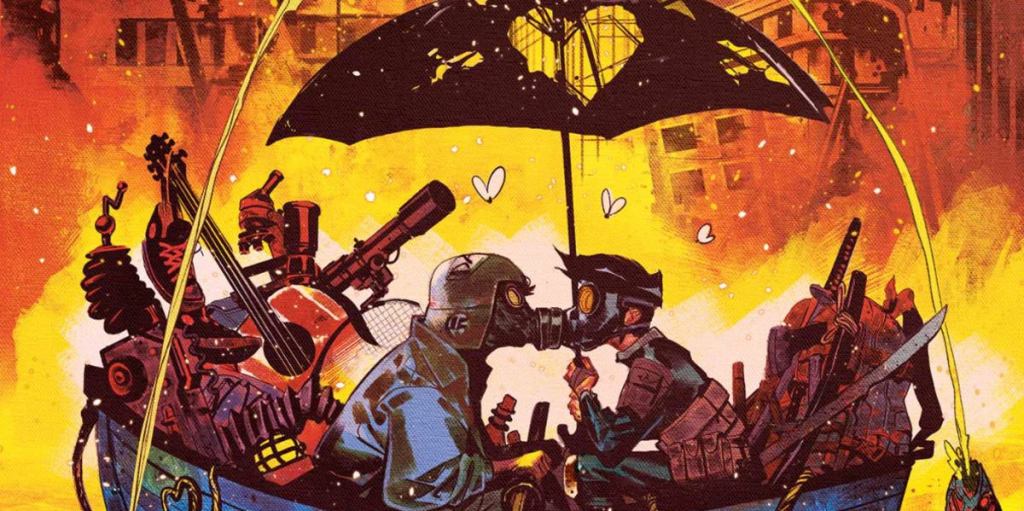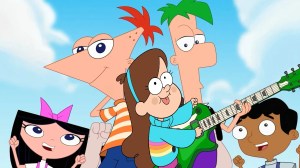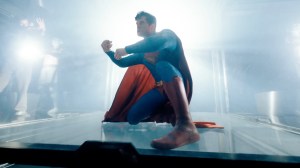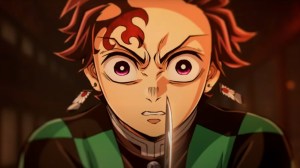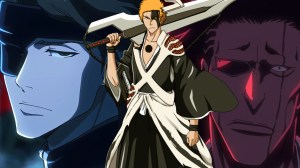Once Upon a Time at the End of the World #1 introduces readers to Maceo and Mezzy, two adolescents surviving in solitary on a planet utterly devastated by untold crises – the former squirreled away in a tower, the latter wandering the wasteland. Their version of the apocalypse codes like an inverted Neverland in which wondrous inventions and childlike logic are paired with hellish landscapes and a corrosive color palette. Read charitably, it’s a fairytale imagining how children might survive an ever-worsening series of crises, but the lack of grounding or characterization in that fairy tale renders it a momentary diversion.
Videos by ComicBook.com
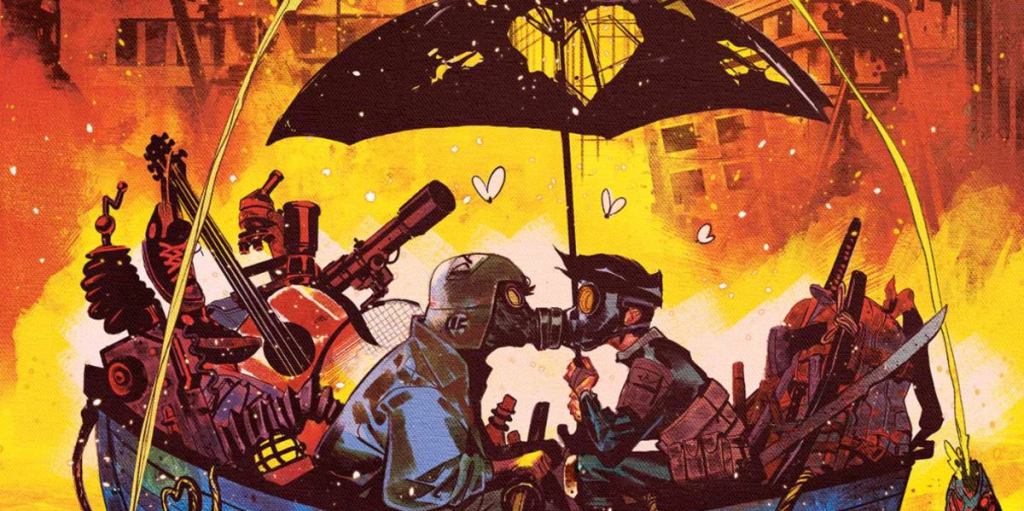
The first issue is at its best when introducing new visual concepts to readers. This apocalyptic earth is as non-specific as possible, presenting a toxic terror that makes Kamandi‘s landscapes appear gentle by comparison. Elevated nightmares provide artist Alexandre Tefenkgi with a blank canvass on which to imagine worst case scenarios. Every creature is only tangentially connected to reality with mutated scorpions and octopuses delivering terrifically tense sequences. Collapsing cityscapes bound in debris are remarkable to observe as is the indulgent, childlike interior of Maceo’s tower. Combined with Lee Loughridge’s lush, amber colors reflecting unseen fire across the sky, it makes Once Upon a Time at the End of the World #1 a noteworthy visual spectacle.
That spectacle applies to the designs of rough and trail-ready Mezzy and sheltered Maceo, as well, but there’s little else that defines the romantic leads of this meet-cute beginning. They are stock figures that fit neatly into the handful of descriptors provided already. Their motives are thin and connection non-existent. The closest the comic ever comes to romance is Maceo’s recognition that Mezzy is a girl inspiring instantaneous infatuation. When the first issue ends, the most obvious cause for why they are now bound together is because that is simply what the story demands.
Rather than emphasizing the specifics of either character or providing space for them to establish a relationship, the issues takes it for granted that its’ protagonists are generally likable. It instead hangs the story upon a mystery box with a time-jump in the final pages that shows how long the story will go and hangs some further cataclysm upon a previously unmentioned machine with a Dr. Seuss-like name. The utilization of such an unremarkable mystery box to hook reader attention is grating.
Given the series’ pitch as a post-apocalyptic romance, it largely misses the mark. While Tefenkgi and Loughridge capture the aesthetics of this setting with colorful charm and dark detail, the space itself is ultimately non-specific and untied to any history beyond “things went bad.” The characters fail to provide that same level of interest and their romance is based simply on them being the only boy and girl existing in the same proximate space – a dull and sadly gender-essentializing perspective on the concept. There simply isn’t much of interest to be found within the pages of Once Upon a Time at the End of the World below its visual appeal.
Published by Boom Studios
On November 23, 2022
Written by Jason Aaron
Art by Alexandre Tefenkgi and Nick Dragotta
Colors by Lee Loughridge and Rico Renzi
Letters by AndWorld Design
Cover by Mike del Mundo

